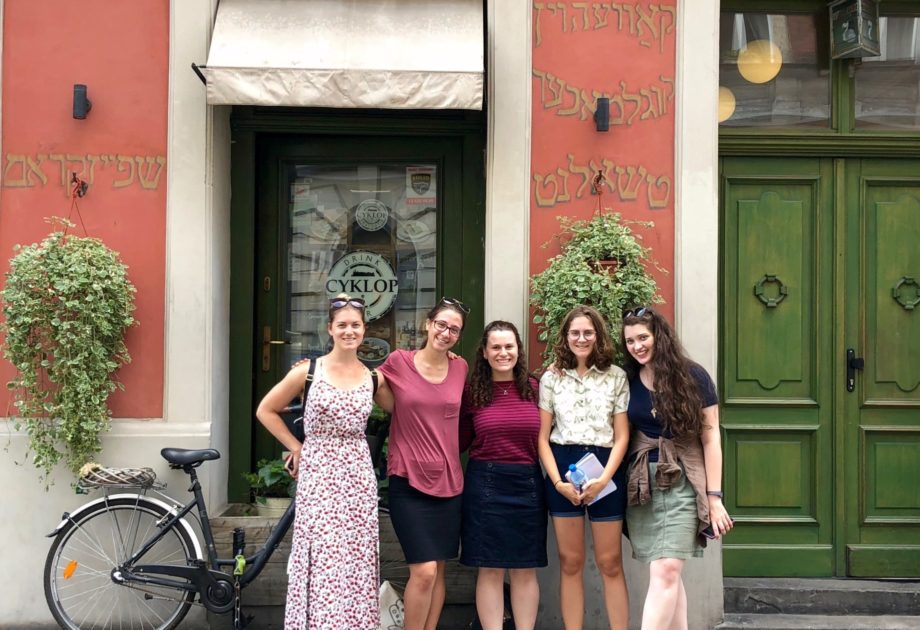Exploring Yiddishland


The 2018 Naomi Prawer Kadar Fellowship brought five Columbia University students to Tel Aviv and Poland to engage in Yiddish scholarship and deepen there understanding of Yiddish language and culture. The fellows documented their journey through a blog. Read one of their posts below and visit the following site to read additional reflections: https://jewishstudiescolumbia.com/myny/naomi-prawer-kadar-fellowship-2018.
Where is Yiddish-land? by Eliana Worenklein
I realized last year that Yiddish is still very much a living language. I have met enough Yiddish scholars and Yiddish speakers (both religious and secular) to know that. But I never understood the extent to which Yiddish still lives, all around the world. No one thinks to ask in conversation outside an ultra-orthodox if someone speaks Yiddish, but when the topic does come up, you can see how popular the language still is. This summer I had an easy Segway into a conversation about Yiddish – a conversation that almost always ended with me speaking in Yiddish. My first Friday night in Israel, as soon as I told the people sitting around the Shabbat dinner table that I was in Tel Aviv for the summer studying Yiddish, I found a native speaker to talk to. He had grown up in a Hassidic home where Yiddish was his first language. We talked about the Yiddish he was raised with and how it is similar to and different from the klal shprach (the new standardized dialect of Yiddish) that I’m learning now. And we had this conversation in Yiddish.
Exactly one week later, I was eating dinner with my family and I met an extended family member’s mother. She used to speak to her father in Yiddish and she hadn’t spoken the language for years since her father passed away. She particularly remembered the Yiddish songs that her father loved to sing. I sat with her, talking about her father and singing the songs that we both knew and again, we did this in Yiddish.
This trend continued. People would ask me what I was doing in Israel, I would tell them I was learning in Yiddish, and then we would continue our conversation in this language that was clearly not forgotten. As part of the Yiddish language program in Tel Aviv we had immersive Yiddish language excursion where we would do activities exclusively speaking Yiddish. On one of these excursions we even ran into a young woman on the beach who, as soon as she realized we were speaking Yiddish, was all too excited to join the conversation and talk to us about the wonders of this language.
Returning to New York, I was able to find many more Yiddish speakers to talk with and many more Yiddish communities to be a part of. Yiddish really is everywhere if you just know where to look. About a week after our trip to Poland, I attended Yiddish Voch, a week long Yiddish immersive retreat. Here I was able to speak with people of all ages and from all backgrounds in Yiddish. I even saw a few people that I knew beforehand but never knew that they spoke Yiddish.
Thinking back on my trip this summer, I am wondering if we can really call Poland “Yiddish-land”, as I have been doing to describe my travels. Poland certainly is a land of Yiddish, particularly of Yiddish history, but it is by no means the Yiddish-land. Where is Yiddish-land? This summer I learned that it’s wherever you look for it. Yiddish, with its language and culture (both modern and historic) is everywhere if you just know how to find it. And I am so glad that I learned how to find it.